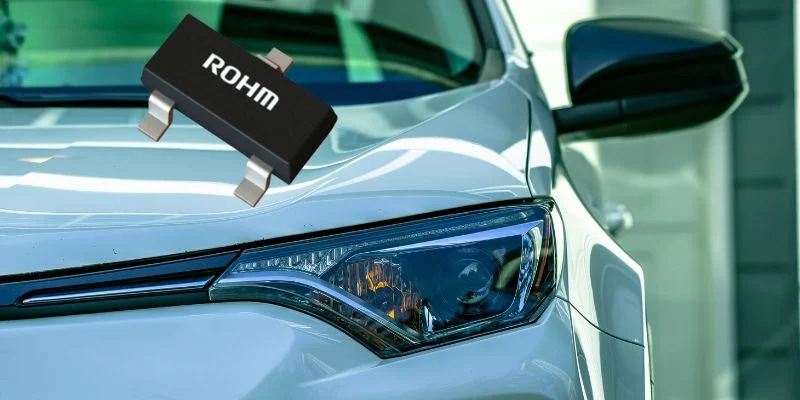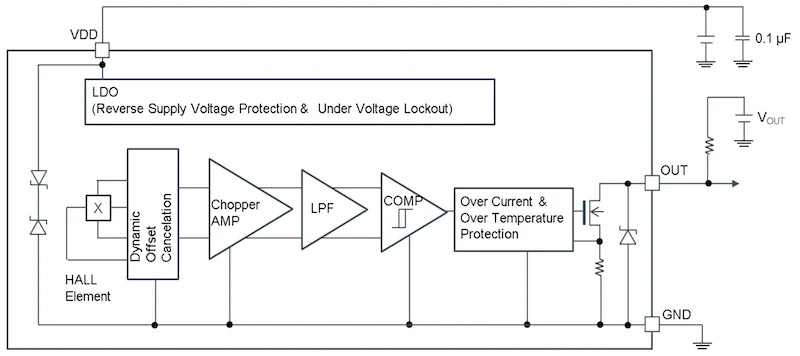Rohm has devised a new unipolar and latch Hall-effect sensor to better detect magnetic fields in automotive designs.
Rohm Semiconductor has developed a new unipolar and latch Hall-effect sensor for improved magnetic field detection in automotive designs. With the automotive industry shifting towards electrification and automation, advanced sensor technologies are playing a crucial role. Rohm Semiconductor has introduced two new families of automotive-qualified Hall-effect sensor ICs to meet the growing demands of modern vehicles.

Rohm has released unipolar and latch Hall ICs for automotive design. Image (modified) used courtesy of Rohm Semiconductor
New Hall ICs Feature 'Industry-Leading' 42 V Withstand Voltage
The BD5310xG-CZ and BD5410xG-CZ series are Rohm's latest automotive-grade Hall ICs. These ICs are designed to enhance the functionality, safety, and comfort of vehicles that heavily rely on electronic control units (ECUs) and sensors. The standout feature of these ICs is their industry-leading 42 V withstand voltage, allowing direct connection to a vehicle's primary 12 V battery power supply. This high voltage tolerance improves reliability, especially in the face of rapid fluctuations in battery voltage. Rohm claims that these new IC families offer the highest Hall-effect withstand voltage in the industry.

Block diagram of the BD310xG-CZ devices. Image used courtesy of Rohm Semiconductor
The main difference between the two families lies in their magnetic detection types. The BD5310xG-CZ series is an S-pole, unipolar detection-type Hall IC, making it suitable for applications like door locks and open/close detection. On the other hand, the BD5410xG-CZ series provides latch-type magnetic detection, making it ideal for rotation detection in motors, power windows, and sliding doors.
Unipolar vs. Latch Hall-Effect ICs
Unipolar Hall-effect ICs generate an output signal when a magnetic field is present. Once the magnetic field disappears, these ICs deactivate. In contrast, latch-type Hall-effect ICs toggle their output state based on the presence or absence of a magnetic field. They retain their activated state even after the magnetic field is removed and only return to their original state when exposed to a magnetic field of the opposite polarity. Latch-type ICs are commonly used in applications that require a nuanced understanding of position or rotation, such as electric motors or encoders.

A latch-type, Hall-effect sensor.







